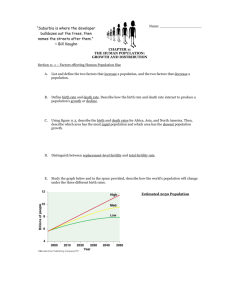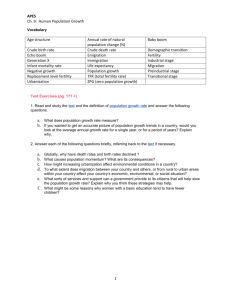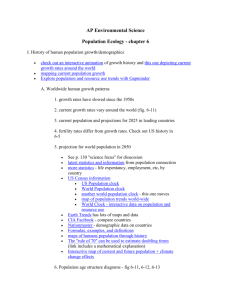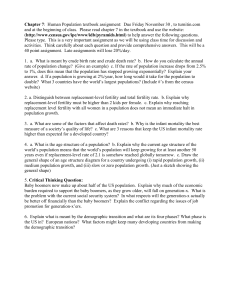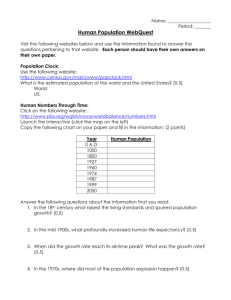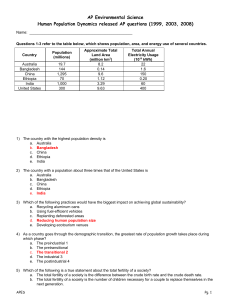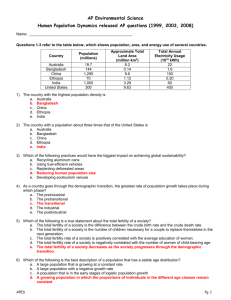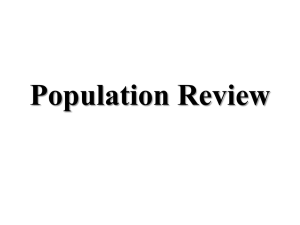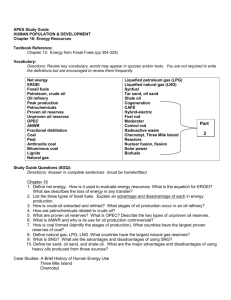Unit 4 Study Guide Questions
advertisement
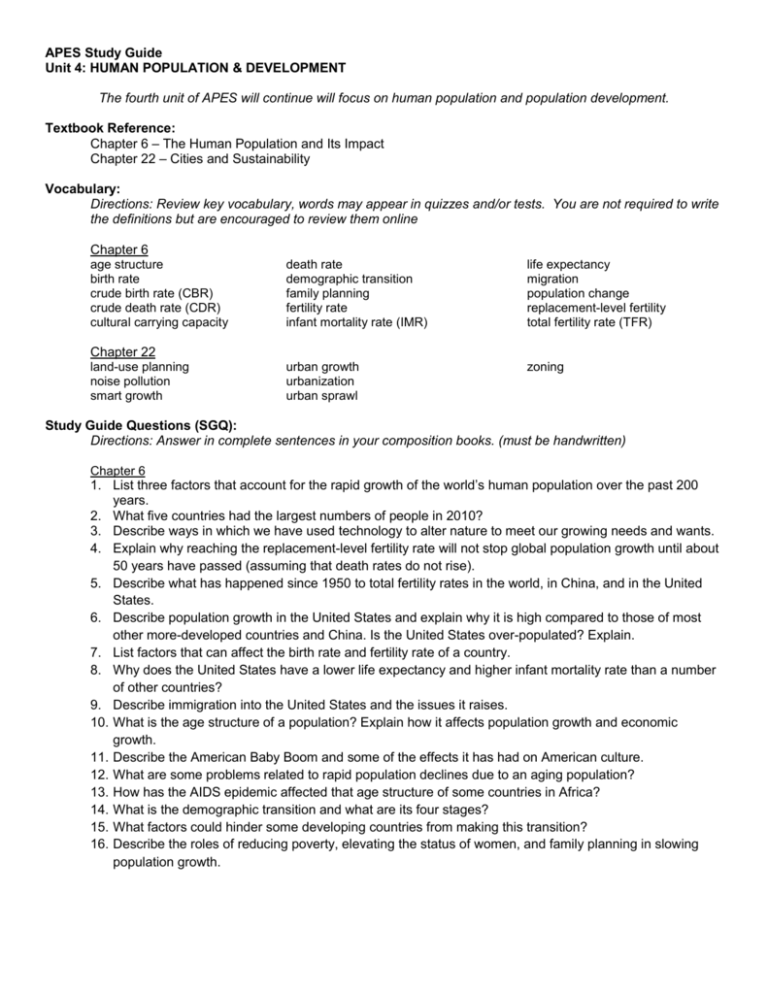
APES Study Guide Unit 4: HUMAN POPULATION & DEVELOPMENT The fourth unit of APES will continue will focus on human population and population development. Textbook Reference: Chapter 6 – The Human Population and Its Impact Chapter 22 – Cities and Sustainability Vocabulary: Directions: Review key vocabulary, words may appear in quizzes and/or tests. You are not required to write the definitions but are encouraged to review them online Chapter 6 age structure birth rate crude birth rate (CBR) crude death rate (CDR) cultural carrying capacity death rate demographic transition family planning fertility rate infant mortality rate (IMR) life expectancy migration population change replacement-level fertility total fertility rate (TFR) urban growth urbanization urban sprawl zoning Chapter 22 land-use planning noise pollution smart growth Study Guide Questions (SGQ): Directions: Answer in complete sentences in your composition books. (must be handwritten) Chapter 6 1. List three factors that account for the rapid growth of the world’s human population over the past 200 years. 2. What five countries had the largest numbers of people in 2010? 3. Describe ways in which we have used technology to alter nature to meet our growing needs and wants. 4. Explain why reaching the replacement-level fertility rate will not stop global population growth until about 50 years have passed (assuming that death rates do not rise). 5. Describe what has happened since 1950 to total fertility rates in the world, in China, and in the United States. 6. Describe population growth in the United States and explain why it is high compared to those of most other more-developed countries and China. Is the United States over-populated? Explain. 7. List factors that can affect the birth rate and fertility rate of a country. 8. Why does the United States have a lower life expectancy and higher infant mortality rate than a number of other countries? 9. Describe immigration into the United States and the issues it raises. 10. What is the age structure of a population? Explain how it affects population growth and economic growth. 11. Describe the American Baby Boom and some of the effects it has had on American culture. 12. What are some problems related to rapid population declines due to an aging population? 13. How has the AIDS epidemic affected that age structure of some countries in Africa? 14. What is the demographic transition and what are its four stages? 15. What factors could hinder some developing countries from making this transition? 16. Describe the roles of reducing poverty, elevating the status of women, and family planning in slowing population growth. Chapter 22 1. Describe two factors that increase the population of a city. 2. List four global trends in urban growth. 3. Describe four phases of urban growth in the United States. 4. Describe some of the problems faced by poor people who live in urban areas. How can governments help to reduce these problems? 5. List five factors that have promoted urban sprawl in the United States. List five undesirable effects of urban sprawl. 6. Create a table comparing the advantages and disadvantages of urbanization. (at least 4) 7. Explain why most cities and urban areas are not sustainable. 8. Describe some of the problems faced by poor people who live in urban areas. How can governments help to reduce these problems? 9. Describe strategies used by the U. S. city of Portland, Oregon, to help control urban sprawl and reduce dependence on automobiles. 10. What are three ways to preserve open spaces around a city? 11. What are new urbanisms the five key goals and why is Vauban, Germany a good example of it? 12. Describe three strategies used within ecovillages to make their neighborhoods more sustainable. 13. Describe an example of a highly sustainable living building. Case Studies: Directions: For each of the following summarize the case study in three sentences; include the author’s main idea. Chapter 6 1. Slowing Population Growth in China – page 125 2. How Long Can the Human Population Keep Growing – page 129 Chapter 22 1. The Ecocity Concept in Curitiba, Brazil – page 586 2. Mexico City – page 596-597 3. Urban Indoor Farming – page 608
